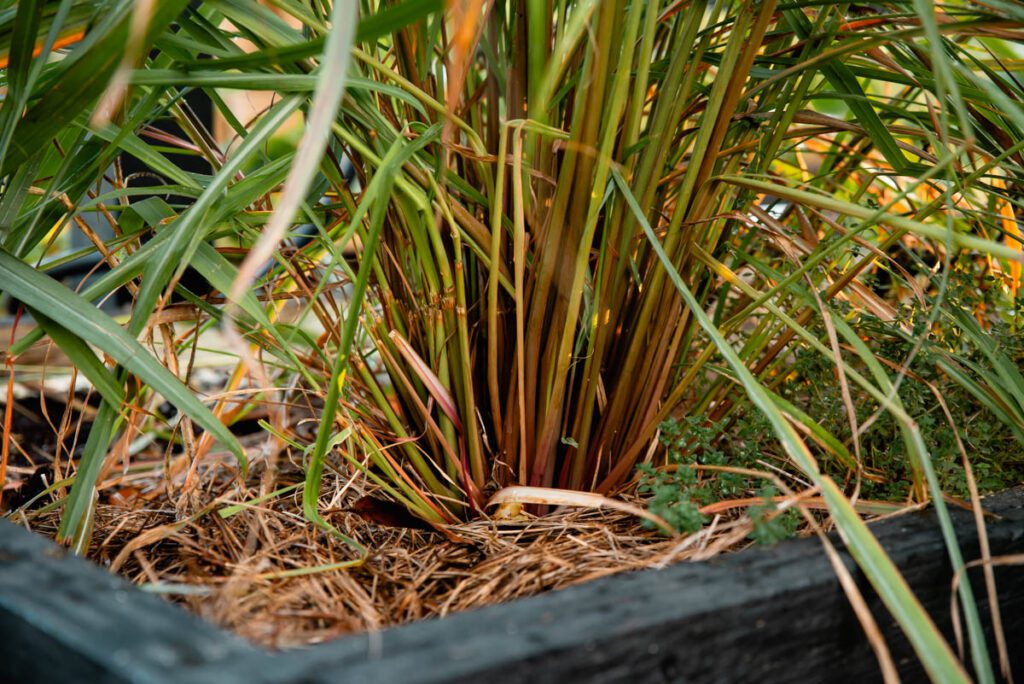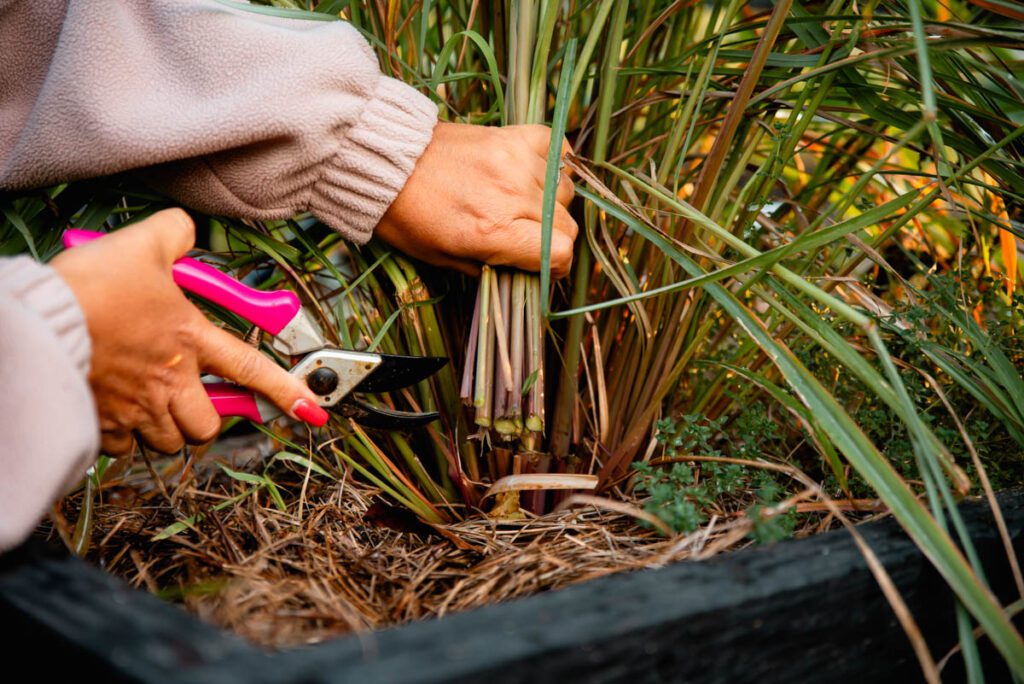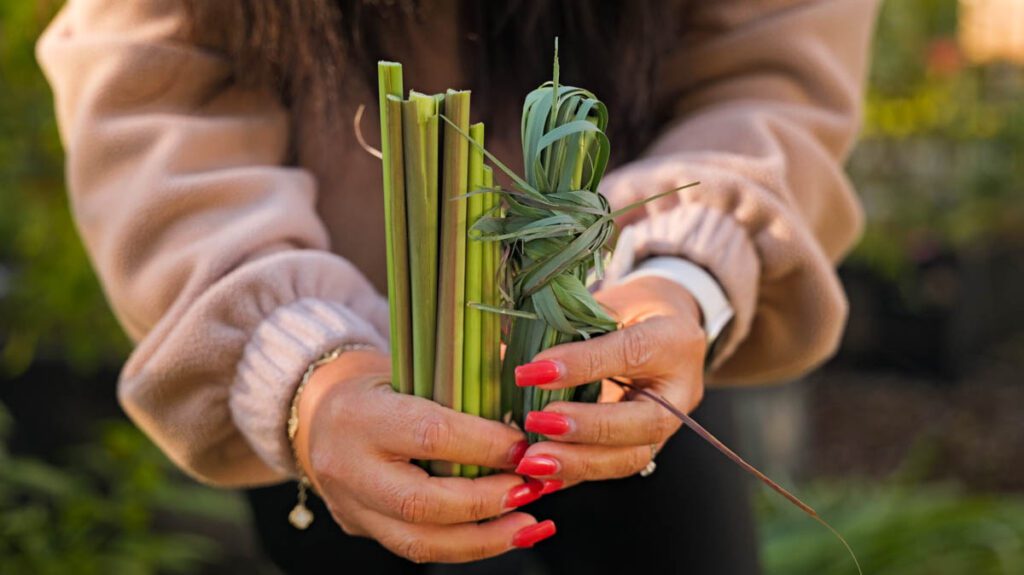HEY GORGEOUS!
Lemongrass is a tropical plant that thrives in warm climates, but with the right care (and a little luck), you can grow it even in colder zones like Central Indiana. While it won’t survive the harsh winter temperatures (trust me, I’ve tried to push it before!), you can enjoy growing and harvesting this aromatic grass during the warmer months. Here’s my guide to growing lemongrass in a cold zone, and how I manage my harvest before frost sets in—without getting totally overwhelmed by its intoxicating scent.
When to Plant Lemongrass
Lemongrass needs warm temperatures to grow well, so hold off on planting it outdoors until you’re sure the last frost has passed (we don’t want those poor little seedlings freezing before they even get started). In Central Indiana, I wait until May/June to plant it outside. If you’re an overachiever (I see you), start your seeds indoors about 6-8 weeks before your last frost date to get a jumpstart. Then, when it’s safe, transplant those beauties outside, and they’ll take off like crazy.

Ideal Growing Conditions
Lemongrass is a sunshine lover—just like me when I can sneak in a good sunbathing session. Here’s what you need to keep it happy:
- Sunlight: Pick a sunny spot because lemongrass needs as much sunlight as it can soak up. Think full sun, no shade, and definitely no competing plants hogging its rays.
- Water: This plant loves its water, but don’t worry, I’m not saying you need to stand out there every day with a hose. An irrigation system works wonders, and honestly, I just let the rain and my setup do the work.
- Soil: Not a diva here—lemongrass just needs well-draining soil. I’m all for low-maintenance plants, and this one fits the bill!
- Fertilizer: Giving it a slow release fertilizer every few weeks will definitely help, personally, I only provide a good quality fertilizer when planting and don’t add any extras while growing.
Harvesting Lemongrass Before Frost
Now, let’s talk about harvest time. Once those cool fall mornings start sneaking up on you, it’s time to act. In Central Indiana, frost can arrive before you know it (I once left my lemongrass out a little too long… lesson learned). Lemongrass does not like frost. At all.

I made a YouTube Video where I show you exactly how to harvest this aromatic plant, just give it a click and enjoy!
Here’s what I do when it’s harvest time:
- Grab your pruners (yes, I have pink ones—functional and cute).
- Cut the stalks right at the base of the plant.
- Careful! The leaves are sharper than you’d think. I should wear gloves, but honestly, I’m usually too impatient and just dive in. You do you, though.
Storing Lemongrass for Winter
Now that you’ve got an armful of fragrant lemongrass, it’s time to store it for the winter months. Let me tell you, I’ve definitely over-harvested before and ended up with WAY more than I can use, so here are a few options for storing it:
- Freeze the Stalks: After cleaning them (because let’s be real, there’s always something living in there), cut the stalks into pieces and freeze them. This is my go-to for soups and stir-fries. When I need some lemongrass, I just pop a few stalks out of the freezer, and boom—instant flavor.
- Make Tea with the Leaves: The leaves are perfect for making a soothing tea. Just remember to clean them thoroughly. You don’t want any uninvited guests in your cup (lesson learned the hard way).
- Dry or Store Fresh: If you’re really feeling ambitious, you can dry the leaves for later. Personally, I keep them fresh in a jar of water in my fridge for a quick grab when I need some lemongrass magic.

Overwintering Lemongrass Indoors
Ah, yes, the part where I try (and fail) to keep plants alive indoors. Full transparency: I’ve attempted to bring lemongrass inside for the winter more times than I’d like to admit, and every time my green thumb turns into a brown one. But if you’re better at indoor gardening than I am (which isn’t hard), here’s how to do it:
- Dig up the plant, keeping the roots intact.
- Give it a little trim and clean off the dirt.
- Pop it in a pot with some fresh soil and keep it somewhere sunny and warm. Lemongrass indoors needs just as much light and love as it does outside, so make sure it stays cozy.
Growing lemongrass in a cold zone like Central Indiana is totally doable—if I can do it, so can you. With a little sun, some water, and a bit of patience, this tropical plant will thrive all summer long. When frost threatens, it’s time to harvest and enjoy the fruits of your (minimal) labor. Whether you cook with it, make tea, or try overwintering indoors (fingers crossed!), lemongrass is a rewarding addition to any garden.
If you have struggle with keeping plants alive indoors—I feel your pain. We’ll figure it out together! Happy gardening!



